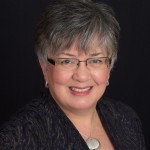A growing specialty in the world of public relations is employee communication. Positions with this area as the primary focus are found most often in large organizations, where the employee base is large and diverse. More importantly, these positions exist when leadership fully understands how employee engagement correlates with an organization’s success or failure. In a sense, employees are the organization, so it is hard to imagine a more critical stakeholder group.
Describing a day in the life of an employee communications specialist doesn’t sound difficult until you sit down and start to write. Why? Because every day is so different from the next. Let me begin by telling you, briefly, about our organization.
DuPont Pioneer is in the production agriculture industry—specifically, crop seed genetics. Headquartered in Des Moines, Iowa, where the business began in 1926, Pioneer now has more than 12,500 full-time employees working in more than 90 countries around the world. Acquired by DuPont in 1999, Pioneer is part of a science company that is more than 200 years old and focused on using science to help solve global challenges related to food, energy and protection.
Since joining Pioneer five years ago, I have enjoyed being part of a very exciting and rapidly growing business. One of the biggest “plusses” had been the value placed on employee communication by our president.
I lead a terrific team of four professionals, each of whom has a full plate of specific responsibilities related to our global employee audience.
So what is my typical day like?
Because each day is so different, I am going to take some liberty with my assignment and tell you instead what a typical week includes. And since it is Friday morning, I am simply going to look back at the week that is now coming to a close. Keep in mind that my role involves more managerial duties than others on the team. (Read: Lots of meetings!)
Monday:
- Global teleconference to review the Pioneer Communications planning calendar
- Met with Pioneer intranet manager to review process to secure outsourced help with online publishing
- Consulting appointment with Web Services staff to set up Team Site for Global DuPont Public Affairs task team that I am leading
- Attended Lunch-and-Learn meeting to hear two renowned journalists/authors discuss looming global crisis: hunger
- Attended final presentation by our summer intern
- Met with two staff members to develop draft presentation for meeting next week with executive sponsors of the next-generation intranet steering team
- Attended evening event related to work
Tuesday:
- Met with Communications Leadership Team to discuss planning process and budgets for 2013
- Web meeting with DuPont colleagues about intranet platform capabilities
- Slogged through overflowing email inbox
- Proofed documents as requested
- Followed up on PRSA Employee Communications Section responsibilities; also on local PRSA Chapter responsibilities.
Wednesday:
- Participated in web conference with DuPont colleagues to view demo of intranet site set up on SharePoint 2010 platform by another DuPont businesses
- Summarized highlights of web conference and sent follow-up memo to appropriate Information Management staff at Pioneer
- Met with new manager for employee online communities about metrics and dashboard options
- Met with staff members to refine draft presentation for meeting next week with sponsors of the next-generation intranet steering team
Thursday:
- Early meeting with next-generation intranet steering team
- Left that meeting early to get to the first of two half-day training sessions with senior leaders, led by David Grossman of The Grossman Group (focus was internal communication of Pioneer strategy)
- Talked with David over lunch about other work he is doing with Pioneer
- Second training session with senior leaders
Friday:
- Three goals today: write this blog post, follow up with members of task team I am leading for DuPont, and get out of the office in time to go to the Iowa State Fair. One down, two to go.
Young professionals who want to work in employee communications should:
- Polish their writing and presentation skills. You must be strong in both of these core skills.
- Get very familiar with intranet best practices, which are evolving even as I write this post.
- Take some business classes, and develop a basic understanding of today’s global economy. This knowledge will help you understand and converse more intelligently with your senior leaders, whose support is critical to your success.
 Christine Jensen, APR, MBA, is the employee communications manager of DuPont Pioneer. Prior experience includes a position as an adjunct lecturer in public relations at the University of North Carolina-Charlotte and public relations/marketing management positions for a private college and several healthcare organizations, including Mayo Clinic, where she managed internal communication. She earned her bachelor’s degree from Grinnell College in Iowa and her Master of Business Administration from the University of St. Thomas in St. Paul, Minn. Jensen served for three years as a board member of the PRSA Charlotte Chapter and currently serves as accreditation chair for the PRSA Central Iowa Chapter and the chair of the PRSA Employee Communications Section. She was a charter member of the executive committee of the Section and chaired its first national conference in Chicago in 1996. The thoughts expressed in this blog post are entirely her own and do not reflect those of her employer.
Christine Jensen, APR, MBA, is the employee communications manager of DuPont Pioneer. Prior experience includes a position as an adjunct lecturer in public relations at the University of North Carolina-Charlotte and public relations/marketing management positions for a private college and several healthcare organizations, including Mayo Clinic, where she managed internal communication. She earned her bachelor’s degree from Grinnell College in Iowa and her Master of Business Administration from the University of St. Thomas in St. Paul, Minn. Jensen served for three years as a board member of the PRSA Charlotte Chapter and currently serves as accreditation chair for the PRSA Central Iowa Chapter and the chair of the PRSA Employee Communications Section. She was a charter member of the executive committee of the Section and chaired its first national conference in Chicago in 1996. The thoughts expressed in this blog post are entirely her own and do not reflect those of her employer.

